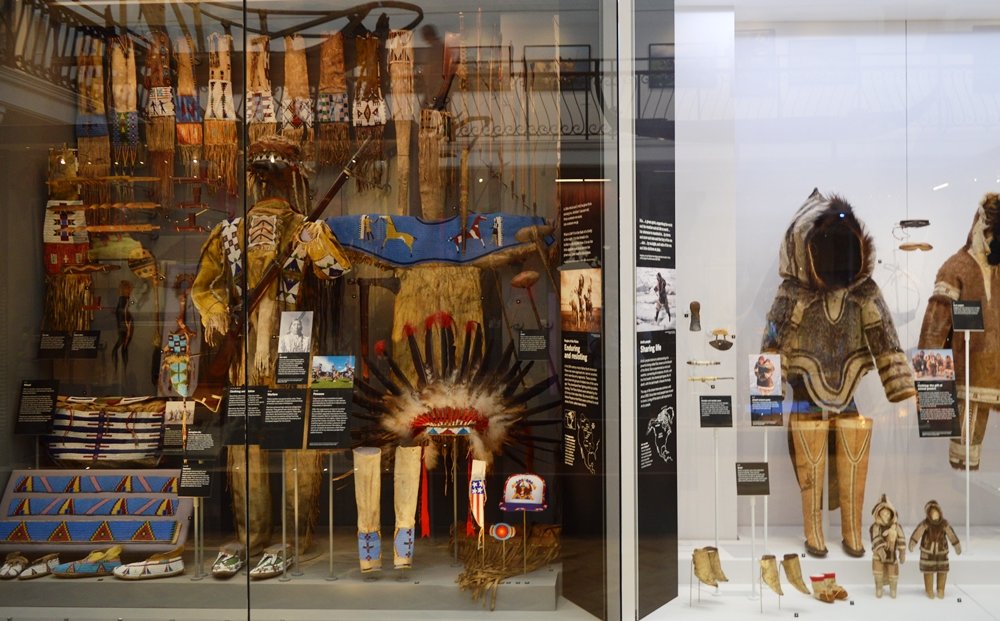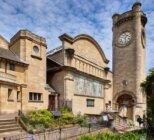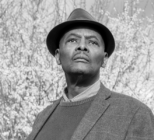What makes the Horniman Museum and Gardens Unique?
What’s unique about the Horniman is the relationships it builds long-term with its communities and that does go all the way back to the founding vision. So, Horniman’s original vision coupled his own personal interest in the objects he collected with a desire to share that passion and enthusiasm. We are at the centre of a network of all sorts of relationships, so the gallery doesn’t exist on its own.
How have the community relationships shaped the World Gallery?
When you come into the gallery there is this an introductory space we call the Wall of Voices, which has given us the chance to encourage people to think about their own relationship with the objects. At this point we have tried to make people think about what objects are important to them and their own lives. We have worked with a youth panel who have produced a series of films. They have spent the past two years training as filmmakers and producers and they have worked with us to develop not just the content, but they have conducted the filming and interviews. Anthropologists, academics, friends and established members of the community provide rich personal stories.
We try to make sure these are sustained relationship and the Youth Panel has been working with us since 2012, with members starting at 11- or 12-years-old, so some of them have grown up with us. We are involving these people to see how working with museums can develop their own skills and this doesn’t just apply to the Youth Panel but all the other community groups.
We work with a huge number of community organisations, for example, we do a lot of work here with refugees and new arrivals. Currently we are working with the Southwark Day Centre for Asylum Seekers – we have been working with them on and off for about ten years now – and they were very interested in trying to have a story embedded in the displays, which broached some of their experiences, particularly around recent media representation of migration.
We knew that we needed to represent that group and tell a broader and deeper story of migration around the Mediterranean, which is a story that has been going on for millennia. We wanted to look at our collections and tell the story of thousands of years of migration around the Mediterranean and represent the interests or concerns of the organisations we work with.
So we are contextualising what is seen as a very contemporary issue and the Southwark Day Centre for Asylum Seekers has also created our annual events for Refugee Week and through this process they have helped us develop the interpretation of some of the spaces here.
How does the World Gallery fit in with the Horniman’s continual growth?
There is an evolution the museum has gone through in the past 100 years. We have had professional curators come in, specialising in ethnomusicology, for example, to look after our music collections and anthropologists, and we even have community engagement and learning specialists today.
This growth of professionalism in the museum has been within the framework of people-centred sharing of stories. And this gallery sits within that context. Previously in this space we had an exhibition that was called African Worlds, (opened in 1999) which was very innovative at the time, built around co-curation working with communities to talk about the collections from their perspective.

Why the World Gallery?
It became very apparent with African Worlds that it wasn’t being as well visited as it had been, so whether it was about the technology or the display, people voted with their feet by saying this is a gallery we don’t want to come to and we were very attuned to that as our evaluation team picks up on the way visitors respond.
We do a lot of in gallery interviews – how people are liking our galleries. The music gallery is always really popular and the natural history gallery, too.
Automatically there was an understanding that this gallery had to be changed. Visitors wanted to see more objects, a wider diversity of objects. They wanted to see and hear more voices in the gallery.
The aesthetic of this display is to show as much as we can and there are low level displays to attract families with young children. There is also interactive space for children with a video of a Lagos market with objects on display that are bought and sold at the markets there. Some of the items for sale in Lagos will be the same that you can pick up from a market in Forest Hill or Deptford or just in a shop down the road.
How will the HLF funding for the World Gallery facilitate new activity plans?
A big proportion of the HLF funding has gone into developing the activity plan, which is a way of engaging with a wide variety of organisations and people, including working with groups of families including English speakers with other languages and those who are learning English. It’s a family organisation and a family friendly museum.
We have also worked with families to advise us on what they think is interesting and exciting and how some of the objects can be best presented to families. We’ve also worked with them to develop the labelling and the text. We have also worked with adult education learnerships about the gallery being a space for learning.
We want this gallery to be a platform for learning as well as a space to come and see our wonderful objects. And so by working with the family groups, we’ve begun to see a nuanced way of experiencing the exhibition. We get a lot of family visits, and some may struggle to have a real interest in a particular area, so they want to have the interpretation written in a certain kind of way.
They also wanted to see their work and impact in the gallery and they wanted to see that as well as curators check and artists getting a name, they can also be credited. In the gallery you will see questioning labels developed by families.

What do you mean when you talk about co-curation and being a constituent museum?
I think what is unique about this gallery, in fairness to museum professionals as a whole, is there has been co-curation and community engagement and what’s unusual about working in this way is the nature of the collections. Because the collections are anthropology, and have been collected over 100 years, they are very significant collections for the communities who used them originally. We have been asking a whole range of people not just the contemporary communities associated with them but local communities, artists, other curators who all have a very different understanding of the objects to comment on them.
This is not something that has come out of the blue, the Horniman has been developing participatory programmes, co-curatorial programmes for many years. Very strong relationships with communities internationally and also in London.
So it’s the ideal place to develop that. The way that we think about the gallery is that it is embedded within this network of relationships and we are not the exclusive know as they connect with eachother as well.
It’s very much as a participatory and a constituent museum so we work with a network of museums, organisation and communities and that’s really what the Horniman is. It’s a building, it’s a garden but more importantly it’s part of a network.
We have a constituency that we work with and that includes our curators, community organisations but it also involves people who have a very strong ownership over the collections. So inevitably there’s discussion, arguments and contention about how we should represent the collection and we have an international panel we work with to discuss some of those concerns.
At the heart of what we are about is the respect above everything else. If people feel like they want their voice heard, we are here to make that happen. And although it looks as though the World Gallery is all finished, and it’s never going to change, the reality is that now that it is open, it becomes a platform for discussion and debate and an exchange of views. We will be changing elements every six months, as will temporary exhibitions, so these conversations continue.











